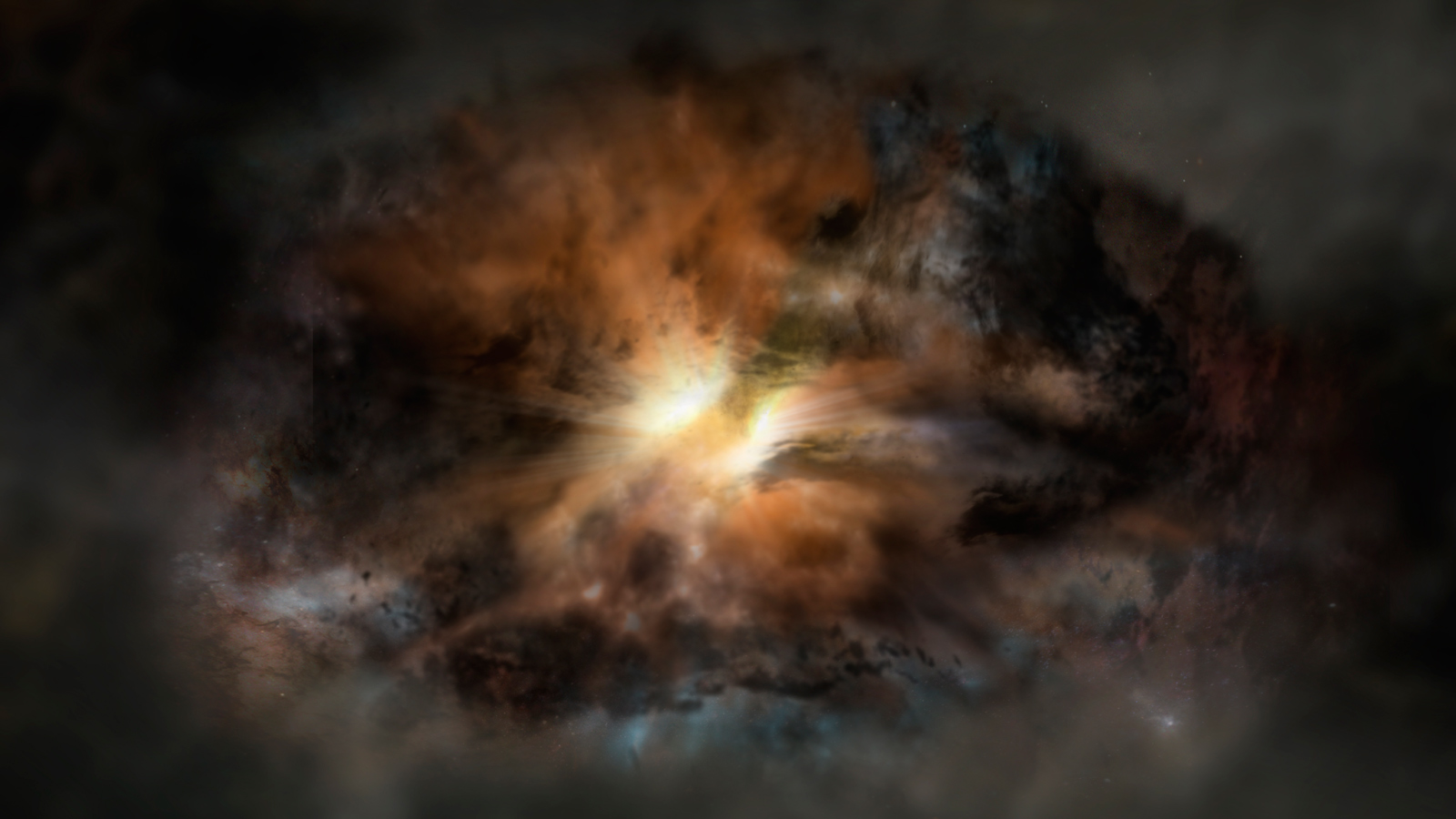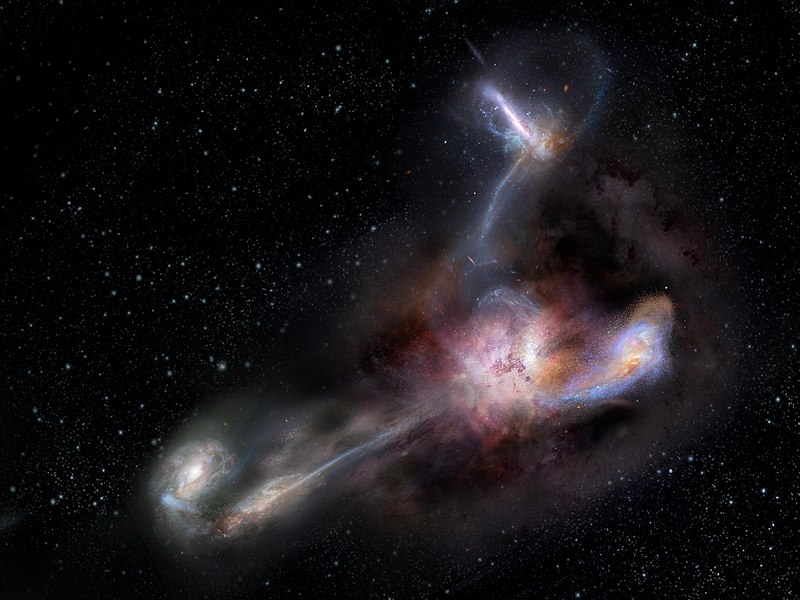Hot DOGs in the Sky
.jpg)
This image is a portion of the all-sky survey from NASA's Wide-field Infrared Survey Explorer, or WISE. It highlights the first of about 1,000 "hot DOGs" found by the mission (magenta circle). Hot DOGs are hot dust-obscured galaxies and are among the most powerful galaxies known. Yellow circles are active supermassive black holes found by WISE, which are much more common.
The panels at right show the "Hot DOG" as seen in the four individual infrared bands obtained by WISE. These images are at wavelengths from 5 to 30 times redder than what our eyes can see, with the shortest wavelengths at top, and longest at bottom.
Dust affects shorter wavelengths more than longer wavelengths. These objects are so dusty that not only their visible light but also their shorter-wavelength infrared light is blocked, as evident by their apparent absence in the top two panels. Less than one in 100,000 WISE sources are similarly prominent only in the two longer-wavelength WISE infrared bands.
The SED of Hot DOGs
.jpg)
This plot illustrates the new population of "hot DOGs," or hot dust-obscured objects, found by WISE. The purple band represents the range of brightness observed for the extremely dusty objects. These powerful galaxies, which host active supermassive black holes at their cores, pour out enormous amounts of light at infrared wavelengths, while their visible light is blocked by dust.
Visible light we see with our eyes has shorter wavelengths than one micron, while the longest wavelengths shown here come from observations with the Caltech Submillimeter Observatory on Mauna Kea, Hawaii. The red line shows the brightness profile, or spectral energy distribution, of a proto-typical infrared luminous galaxy.
The small images near the top show more familiar objects at a range of temperatures from 70 Kelvin, or minus 330 degrees Fahrenheit, for liquid nitrogen, to 1,500 Kelvin, or 2,240 degrees Fahrenheit, for lava. The energy from hotter objects peaks at shorter wavelengths.
The extreme WISE objects represented by the purple band are much brighter -- and peak at much shorter, or hotter, wavelengths -- than the typical infrared luminous galaxy, hence their nickname: hot dust-obscured galaxies or Hot DOGs.
Artists Impression of W2246-0526

Artist's impression of the Hot DOG W2246-0526, based on the results of Díaz-Santos et al. (2016). Using ALMA [CII] observations of the system we found that the ISM in the Hot DOG is dominated by turbulence, and may be unstable against the energy being injected by the AGN potentially producing an isotropic outflow.
W2246-0526 Multiple Merger - ALMA View

Deep observations of the dust continuum at 212 microns of W2246-0526 with ALMA, from Díaz-Santos et al. (2018). The observations show that W2246-0526 is connected with dusty streamers with three nearby galaxies, indicating that the Hot DOG is at the center of a multiple merger system.
W2246-0526 Multiple Merger - Artist's Impression

Artist's impression of the multiple merger system around W2246-0526.
Deep observations of the dust continuum at 212 microns of W2246-0526 with ALMA, from Díaz-Santos et al. (2018). The observations show that W2246-0526 is connected with dusty streamers with three nearby galaxies, indicating that the Hot DOG is at the center of a multiple merger system.










